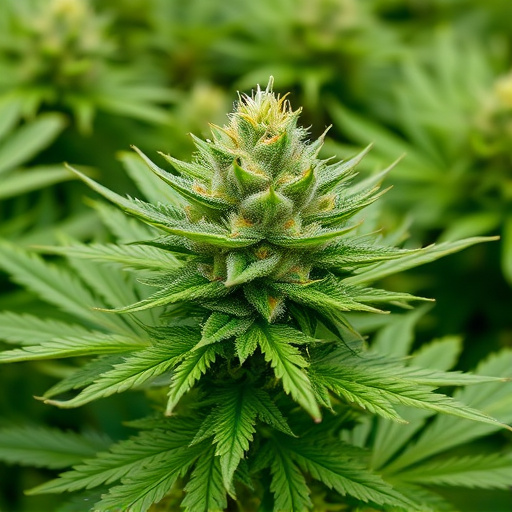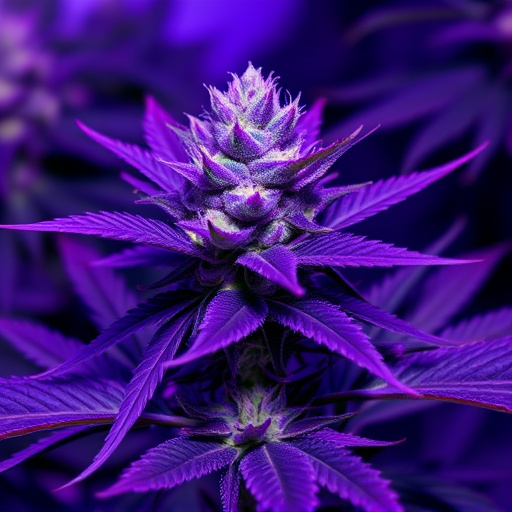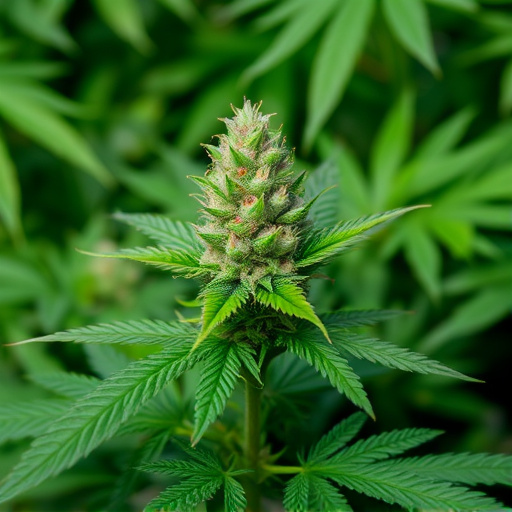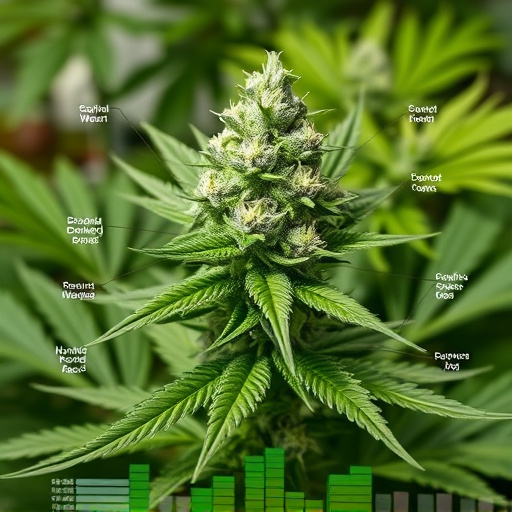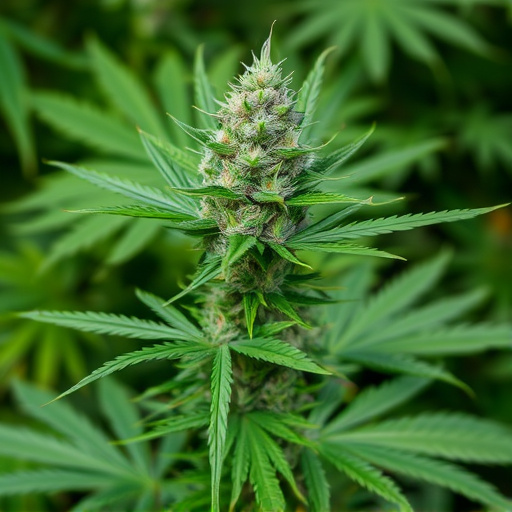Identifying cannabis strains is crucial for optimal medical treatment. The unique composition of flowers, rich in cannabinoids (like THC and CBD) and terpenes, determines therapeutic effects. Analyzing these compounds—such as myrcene, limonene, and pinene—helps predict health outcomes. Professionals guide patients to select specific strains tailored to symptoms, offering effective pain management, energy boost, or calming properties. This precise approach ensures patients receive the best relief without unwanted side effects.
Cannabis flowers have gained significant attention for their potential medical benefits, driven by their unique composition of cannabinoids and terpenes. Understanding these compounds is crucial in navigating the vast array of cannabis strains available. This article delves into the science behind cannabis flowers, focusing on how specific strains cater to diverse medical conditions. By identifying the right cannabis strains, individuals can harness the therapeutic advantages of cannabinoids, offering a natural approach to wellness.
- Understanding Cannabis Flowers and Their Composition
- Identifying Cannabis Strains for Specific Medical Conditions
- The Therapeutic Benefits of Different Cannabinoids Present in Cannabis Flowers
Understanding Cannabis Flowers and Their Composition

Cannabis flowers, also known as buds, are the most sought-after part of the plant for medicinal and recreational purposes due to their high concentration of active compounds. Understanding the composition of these flowers is crucial when identifying cannabis strains, as each strain possesses a unique combination of terpenes, cannabinoids, and flavonoids that contribute to its therapeutic properties. Cannabinoids like THC (tetrahydrocannabinol) and CBD (cannabidiol) are the most well-known, with THC responsible for the plant’s psychoactive effects and CBD offering potential medical benefits without the high.
Terpenes, aromatic compounds found in essential oils, further enhance the therapeutic profile of cannabis flowers by interacting with cannabinoids. These volatile molecules not only give cannabis strains their distinct smells and flavors but also play a role in modulating the plant’s effects on the body. By examining the specific terpenes present in a strain—such as myrcene, limonene, and pinene—and their relative concentrations, users can gain insights into potential therapeutic outcomes and tailor their choice of cannabis flowers to address particular health concerns.
Identifying Cannabis Strains for Specific Medical Conditions
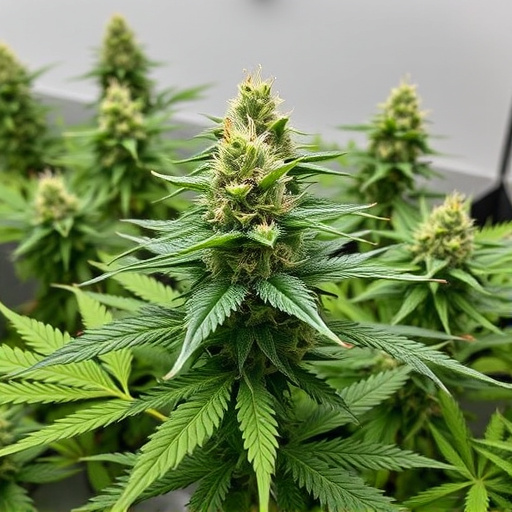
When it comes to medical cannabis, identifying the right strain is crucial for effective treatment. Different cannabis strains have distinct chemical profiles, known as terpenes and cannabinoids, which determine their unique therapeutic properties. For instance, Indica strains are popular for their calming effects, making them suitable for conditions like anxiety and insomnia. Sativa strains, on the other hand, are known to stimulate creativity and energy, often aiding patients with depression or chronic fatigue.
Identifying cannabis strains involves understanding these chemical compositions. Patients and caregivers can consult specialists who can guide them in choosing specific strains based on symptoms and desired effects. This process ensures that the chosen strain aligns with the patient’s medical needs, providing optimal relief and enhancing their quality of life.
The Therapeutic Benefits of Different Cannabinoids Present in Cannabis Flowers
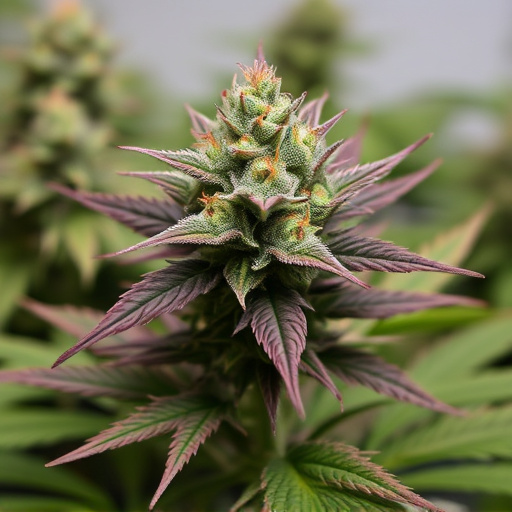
Cannabis flowers offer a diverse range of medical benefits due to the various cannabinoids present in different strains. Cannabinoids are chemical compounds that interact with the body’s endocannabinoid system, playing a crucial role in maintaining homeostasis. Each cannabinoid has unique properties, contributing to specific therapeutic effects. For instance, THC (tetrahydrocannabinol) is known for its psychoactive properties and is effective in managing pain, stimulating appetite, and reducing inflammation. On the other hand, CBD (cannabidiol) lacks psychoactive effects but is prized for its potential to alleviate anxiety, reduce seizures, and suppress insomnia without causing impairment.
Identifying cannabis strains with specific cannabinoid profiles allows patients to tailor their treatment to their needs. Some strains are rich in THC for powerful pain management or appetite stimulation, while others have higher CBD levels for anti-inflammatory and anxiolytic effects. This customization ensures that patients can experience the full potential of medical cannabis without unwanted side effects. By understanding the therapeutic benefits of different cannabinoids, healthcare providers and patients can make informed decisions when selecting appropriate strains for various conditions.
Cannabis flowers offer a wealth of medical potential thanks to their diverse composition of cannabinoids and terpenes. By understanding these compounds and identifying specific cannabis strains, patients can access tailored therapeutic options for various conditions. The unique properties of different strains, combined with the specific cannabinoids they contain, make cannabis a versatile tool in modern medicine, providing relief and improving quality of life for many. When used responsibly and under professional guidance, identifying cannabis strains for individual needs can be a game-changer in healthcare.



